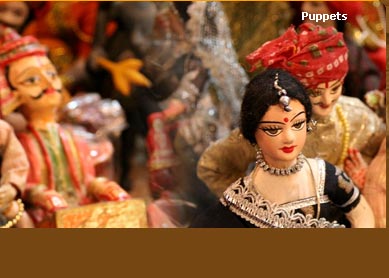

Qutub Minar

The tallest brick minaret of the world, Qutub Minar is the
pride of Delhi - the old historical walled city and national capital of
India. An excellent example of Indo-Islamic architecture, the Qutub Minar
and its monuments with its deeper historical significance find its inclusion
in the list of World Heritage Sites of UNESCO.
Emulating the minaret of Jam of Afghanistan, the first Muslim king of Delhi, Qutb-Ud-Din-Aybak started the construction of Qutub Minar in 1193. Latter, his successor, Iltutmish added second, third and fourth floor, which was latter forwarded by his successor, Firoz Shah Tughlaq, who constructed the fifth and last floor of the minaret in 1368. Requiring around 400 steps to reach to the top, the minarets with its height of 72.5 metres, unravel a very fine opportunity to see Indo-Islamic architecture.
The minaret, built on the ruins of Lal-Kot and using the materials of 27 destroyed Hindu and Jain temples, is a unique composite of diverse architectural structure. The minaret made of red sandstones have tangled carving and holy Quran inscribed on it. Hindu floral art inscribed on the pillars, heavily carved fluting (a persian technique) and Muslim calligraphy show a perfect example of Indo-Muslim architectural beauty.
Must See & Do !
Watch the Islamic architectural beauty: Built by first Muslim king of Delhi, Qutb-Ud-Din-Aybak, the minaret as well as its complex are fine example of Muslim architectural beauty. Do not forget to get around the Alai Darwaza, which poses a splendid example of Muslim architectural beauty.
Explore the remaining of Hindu and Jain temples: We suggest you to have a keen eye while exploring the complex. Better to watch are ornamental pillars of the mosque, which was taken from many of famous devastated Hindu and Jain.
Take more historical insight: Ask your guide to give you a better insight into the historical occurrence of the era when the minaret was built. It is wonderful as well as interesting to know more about Indian history.
Enjoy photography: Capturing some of unique frames of the historical monuments is hilarious opportunity when you are in Delhi. Making a good angle and frame might be time- taking, but results are amazing. Believe my words.
Other Monuments
Emulating the minaret of Jam of Afghanistan, the first Muslim king of Delhi, Qutb-Ud-Din-Aybak started the construction of Qutub Minar in 1193. Latter, his successor, Iltutmish added second, third and fourth floor, which was latter forwarded by his successor, Firoz Shah Tughlaq, who constructed the fifth and last floor of the minaret in 1368. Requiring around 400 steps to reach to the top, the minarets with its height of 72.5 metres, unravel a very fine opportunity to see Indo-Islamic architecture.
The minaret, built on the ruins of Lal-Kot and using the materials of 27 destroyed Hindu and Jain temples, is a unique composite of diverse architectural structure. The minaret made of red sandstones have tangled carving and holy Quran inscribed on it. Hindu floral art inscribed on the pillars, heavily carved fluting (a persian technique) and Muslim calligraphy show a perfect example of Indo-Muslim architectural beauty.
Must See & Do !
Watch the Islamic architectural beauty: Built by first Muslim king of Delhi, Qutb-Ud-Din-Aybak, the minaret as well as its complex are fine example of Muslim architectural beauty. Do not forget to get around the Alai Darwaza, which poses a splendid example of Muslim architectural beauty.
Explore the remaining of Hindu and Jain temples: We suggest you to have a keen eye while exploring the complex. Better to watch are ornamental pillars of the mosque, which was taken from many of famous devastated Hindu and Jain.
Take more historical insight: Ask your guide to give you a better insight into the historical occurrence of the era when the minaret was built. It is wonderful as well as interesting to know more about Indian history.
Enjoy photography: Capturing some of unique frames of the historical monuments is hilarious opportunity when you are in Delhi. Making a good angle and frame might be time- taking, but results are amazing. Believe my words.
Other Monuments

